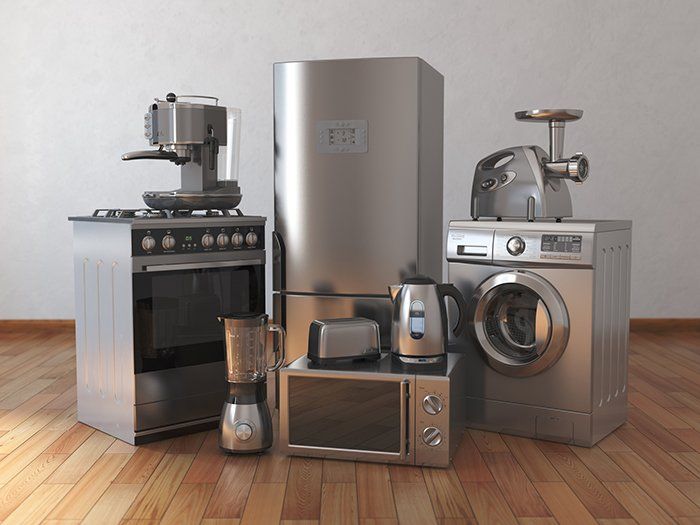Electrical Wiring: Readying Your Kitchen for New Appliances
Older homes may seem quaint and full of character, but often that original kitchen would make many modern homeowners feel uncomfortable or frustrated. Older kitchens contain dated appliances, quirky or limited counter space and cabinets, too few wall outlets, and poorly-placed lighting fixtures.
One aspect of kitchen remodels or upgrades involve the installation of newer and larger major appliances. But is that electrical wiring in your older kitchen ready for a brand new refrigerator, stove, dishwasher, and disposal? Here's what to know about readying your kitchen for new appliances.
Modern Appliances Need More Power
In the past, most homes only needed a mere 60 amps of power to service a basic fridge, stove, and coffee maker in the kitchen. Times have changed and so have the power needs of our appliances. Now, a smaller townhome or all-gas home might get by on 100-amp, 240-volts, but the vast majority of American homes need 200-amp, 240-volts.
Our newer kitchen appliances are larger and more elaborate than your grandmother's olive green model from the 1950s. Many refrigerator models now contain circuit boards to support the small computer set in the door that notifies you when you run out of yogurt.
But even though new fridges, stoves, and dishwashers are extremely energy-efficient, they require more power than a dated wiring system can safely provide. Before you design new spaces for the fridge and stove, first make sure the electrical system is up-dated to better handle your additional power demands.
Even better, each major kitchen appliance needs its own dedicated circuit to prevent an overload. Consider the differing circuit requirements of the following kitchen appliances:
- Refrigerators need a 20-amp, 120-volt circuit.
- Electric stoves need a 50-amp, 240-volt circuit.
- Dishwashers need a 15-amp, 120-volt circuit.
- Microwaves need a 20-amp, 120-volt circuit.
Our love of larger kitchen appliances and more exotic small appliances like espresso makers, bread makers, and instant pots just demand more power than old kitchen wiring can handle at one time.
Modern Kitchens Need More Outlets
Old kitchens are usually equipped with far fewer electrical outlets than today. The search for enough plugs for all our kitchen gadgets would end quickly in an older kitchen with only four choices. Modern code requires a certain number of specifically-placed outlets for more reasons than convenience. Too few outlets inevitably prompt the dangerous over-use of extension cords, which can be a fire hazard.
Don't overlook code requirements for GFCI outlets, or ground-fault circuit interrupters. This unique type of outlet is necessary near water and where electrocution is more likely. In the kitchen, you typically need one right by the sink and beneath the sink for the garbage disposal.
If your kitchen lacks appropriate wall outlets, make sure that room has the proper amount of the right electrical outlets before you invest in new appliances.
New Electrical Wiring Provides the Correct Upgrades
Fortunately, readying your old kitchen for new appliances is as easy as calling a qualified electrician. They can check the wiring in your home and make sure you have the right amount of amps. If the wiring is okay, chances are you only need the addition of the appropriate number of wall outlets with dedicated circuits.
Otherwise, an electrician can re-wire you home and upgrade your breaker panel to provide 200-amp, 240- volt. Additionally, an electrician can wire your kitchen for additional light fixtures in the event you want more illumination.
Call Express Electrical Services when you want to modernize the electrical wiring in your kitchen for new appliances, add more lighting above the sink and island counter, add more outlets, or any other kitchen wiring updates.

